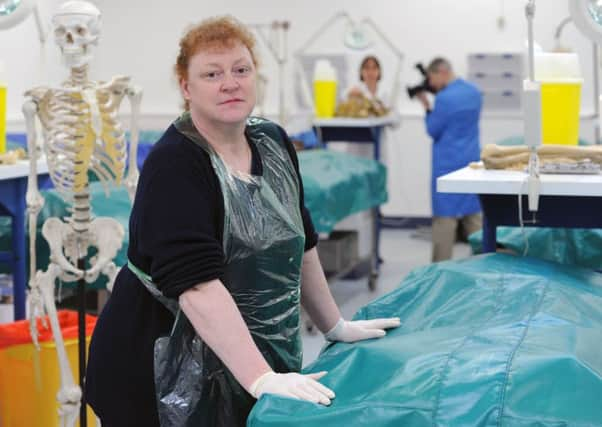Kirsty Gunn: Forensic expertise of a grande dame gives us the gift of answers and closure


But I think of her, in the main, as in the terms of ‘where on earth the world would be without her’, when I consider her groundbreaking work in forensics and anatomy – and how this benefits all of us. Whatever we do. That’s every single one of us, mind you. I reckon so. Each man, woman and child rattling around in modern society, trying to make sense of ourselves not only as people but as bodies… For that’s where her expertise really shows itself, really takes its place among us.
Certainly her presence may be an indirect benefit, in the first instance, for the most part, for most of us – for, mercifully, not many, proportionally speaking, will need the certainties Sue’s work provides.
Advertisement
Hide AdAdvertisement
Hide AdHow many of us, for example, need to identify the remains of our loved ones after some catastrophe? Or be sure that the corpse laid alongside the other is the one that we have a connection to? Or that the police may be able to place within the context of their investigations the particular piece of forensic information Sue provides – that in turn will bring solutions and answers to their own criminal enquiries?
For these are all aspects of her and her team’s groundbreaking work that has brought about change, on an international level, in the way we regard the effects of anatomical science and research in our lives… And yes, mercifully, this may not touch most of us directly.
But indirectly… Oh my goodness me, I’m starting to think this woman might just be some sort of meta-stabilising presence in our hyper-cerebral, overly frenetic and violently contingent lives – providing answers and assurances that create calm and closure; this impacts upon us all. And most recently, over the last week in particular, she has proved how her work is life-giving, strangely, and beautifully, to certain aspects of our experience that may have formerly been shrouded by the terrors of death and grief.
For can you imagine being Lydia Reid and having Dame Professor Sue Black confirm for you, that yes, all those worries you had all that time ago that the baby you always told the nurses was not your baby – really wasn’t? That your little boy, who you’d called Gary, was never given back to you at all, to grieve and mourn, but instead only another poor woman’s infant? And that the coffin that you were told held his remains was buried empty?
Can you imagine feeling any of those things and being told to calm down, pull yourself together, not to be so presumptuous as to question highly trained hospital staff etc etc etc…And then having Sue perform her mighty work and prove you right after all?
As a forensic anthropologist this was what she could do. After a mother’s 40-year campaign to be listened to, Sue was able to exhume the coffin of Lydia Reid’s son to find only a name tag within that spelled his name incorrectly. That, and a shawl and a hat.
Can you imagine being Lydia Reid now, after all that time? Finding this out – and the relief and horror of it, all at once? And righteous anger and grief? Can you imagine that, any more than you could think what it was to be her all those years ago, newly delivered of a longed for, eagerly awaited baby, only to learn that the child was not to live?
No. We can’t imagine any of these things. All the writing in the world can’t do it. It might help us try, all the imaginative work we undertake may attempt it – to truly put ourselves within the shell, the mind and heart and body of another…But in the end we can’t ever complete the transformation. We can’t ever be Lydia Reid, feel as she does, grieve and rage and mourn as she does, a woman denied not only a son, but the truth of his end.
Advertisement
Hide AdAdvertisement
Hide AdAnother woman, though, has made it possible for there to be a conclusion to a train of events set in motion a lifetime ago. To bring certainty to where there was only ever the turmoil of doubt. That, surely, I think, brings a kind of peace that may calm us all.
As John Donne wrote in his famous essay: “No man is an island… Every man’s death diminishes me because I am that man…” Dame Professor Sue Black reminds us, in this past week more compellingly than ever, in her work, of the truth of the poet’s words.